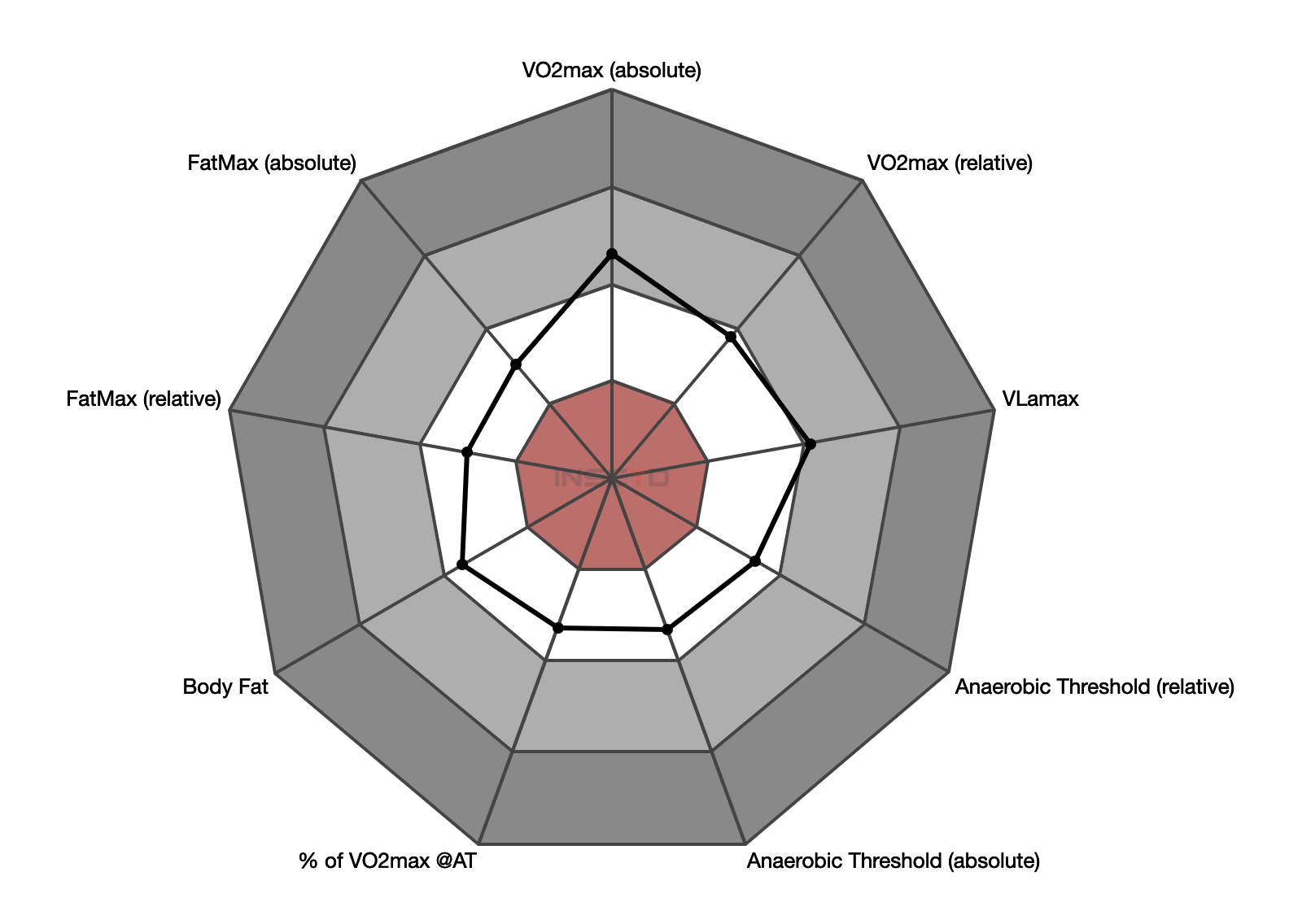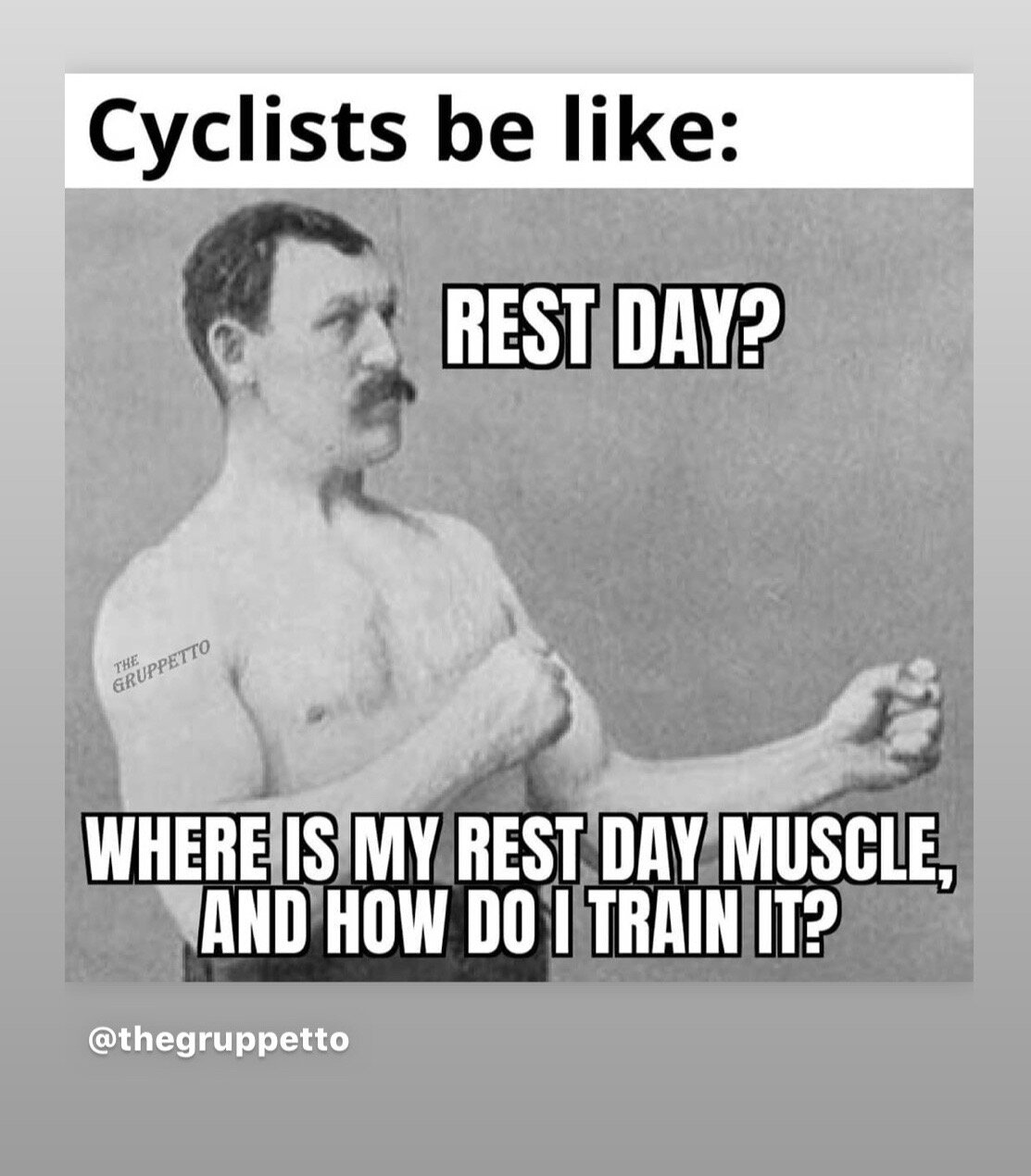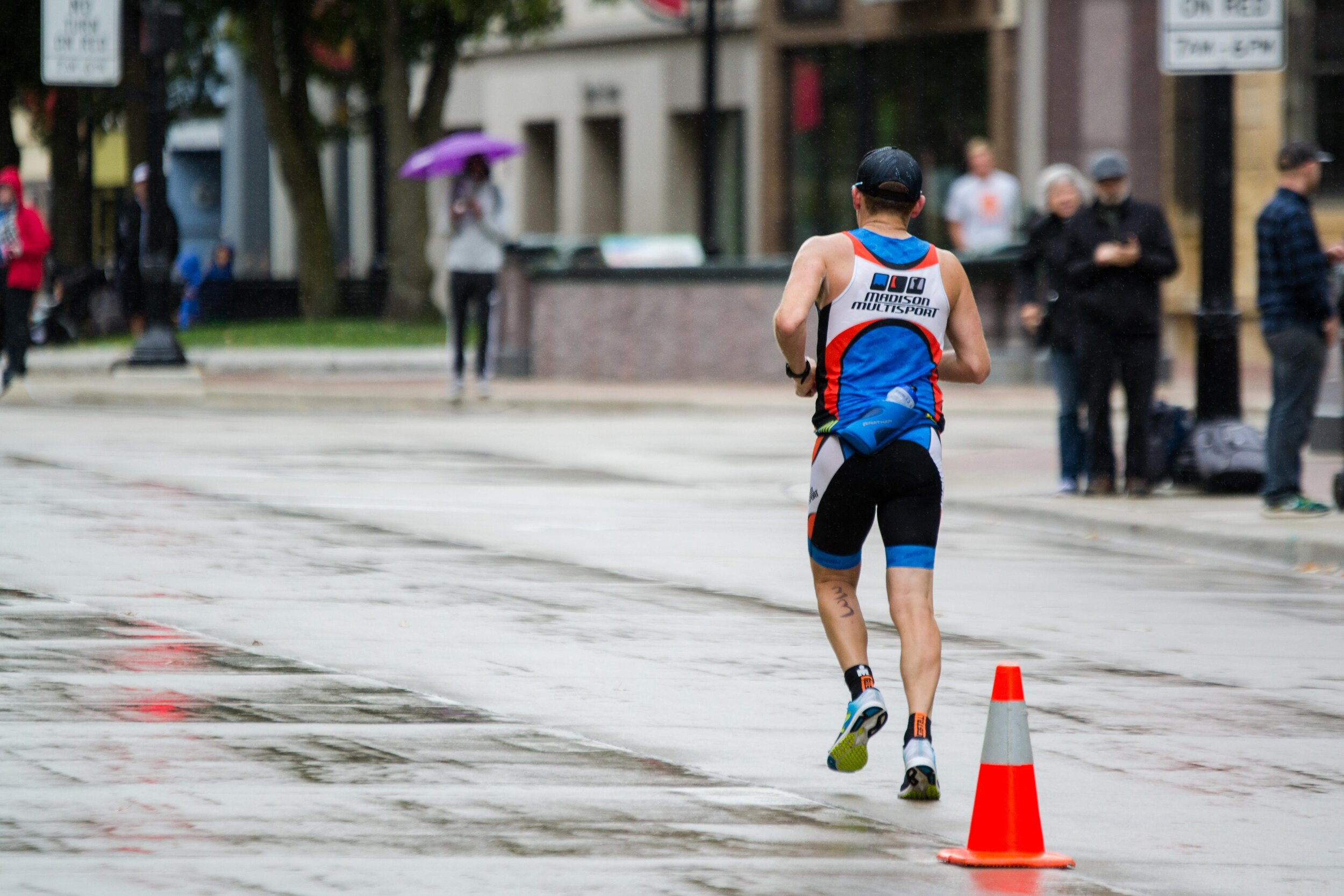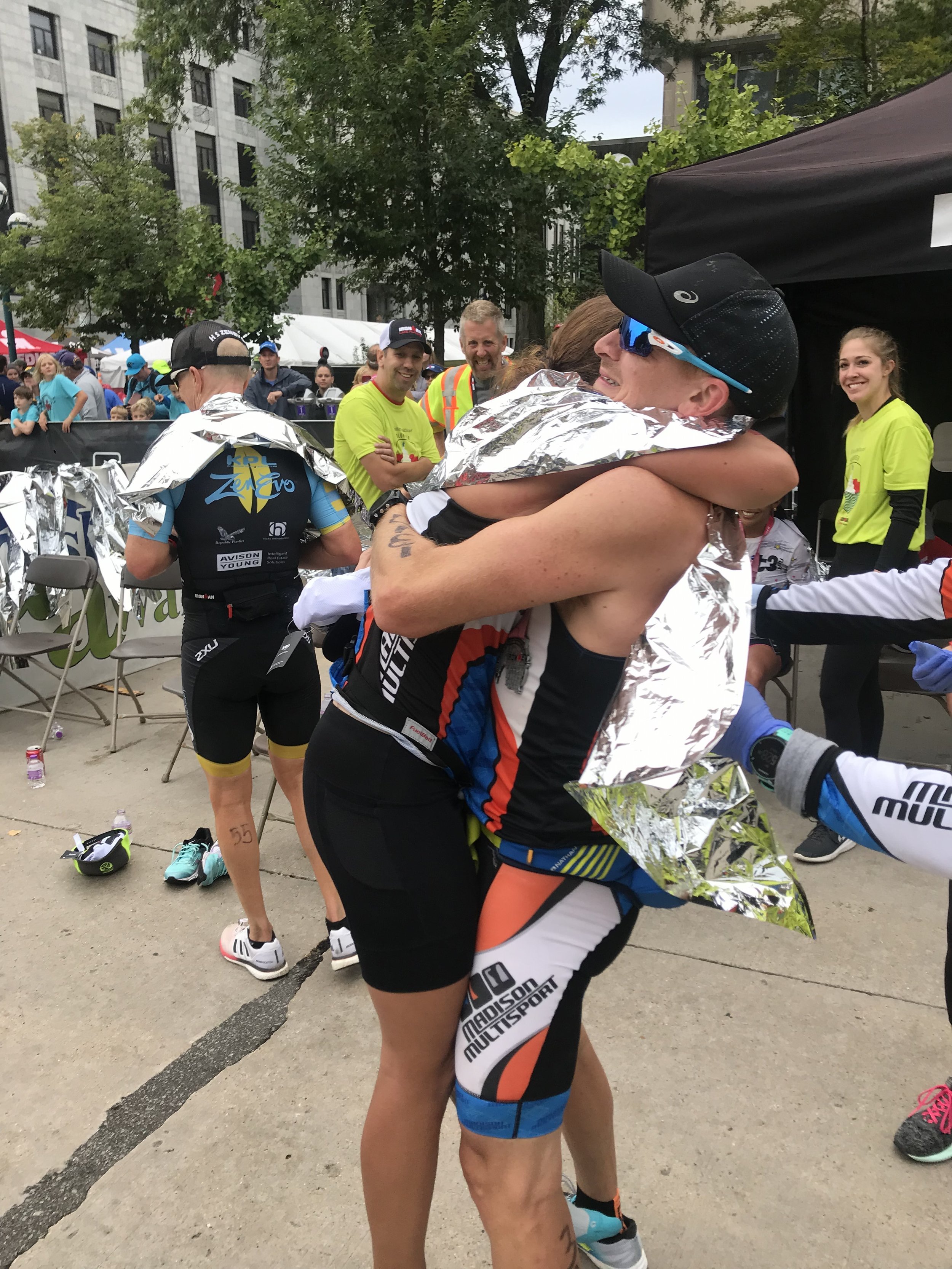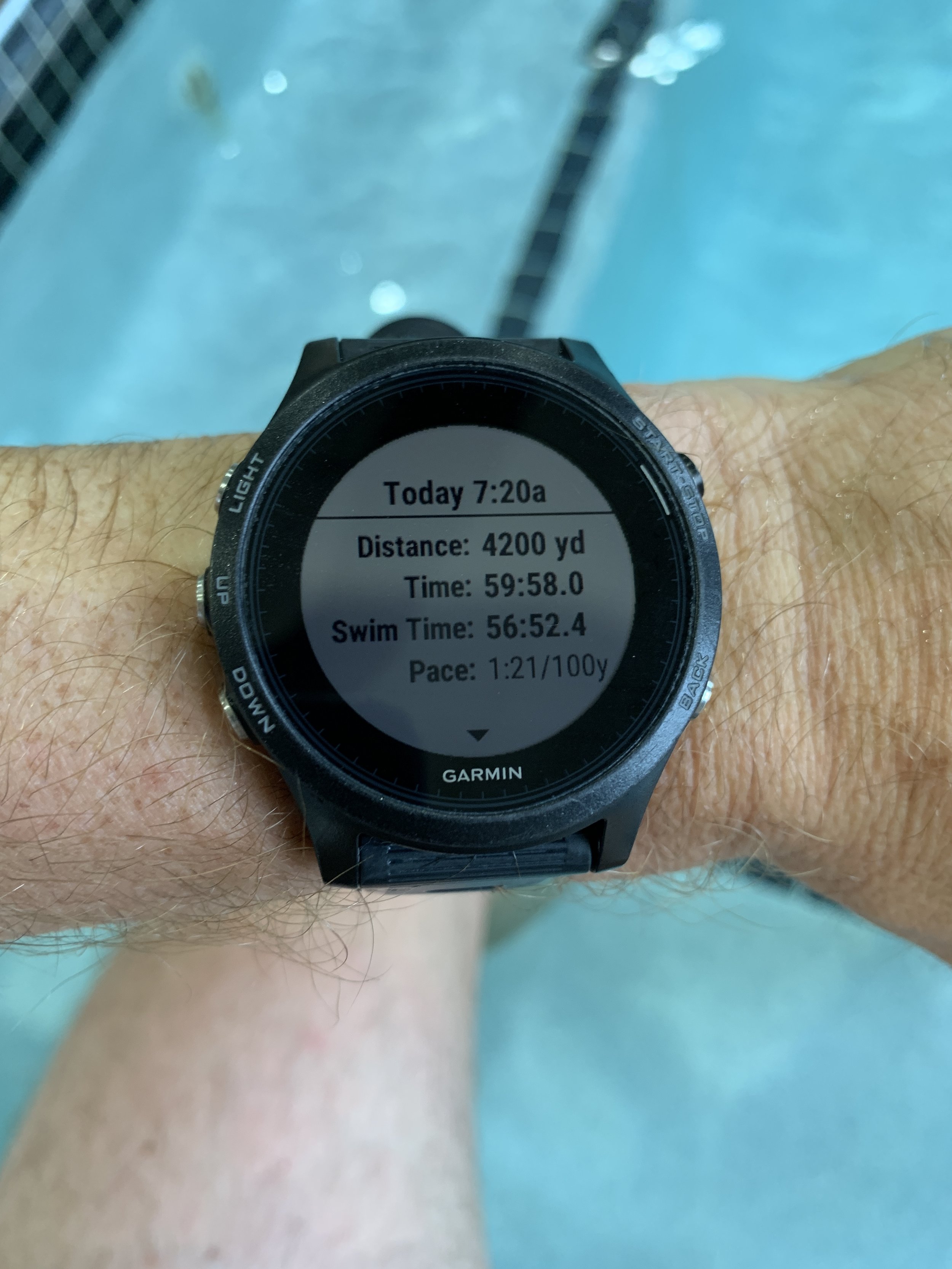Becoming a stronger cyclist is one of the best ways to achieve a faster overall time and a better run off the bike.
Because cycling makes up such a large portion of a triathlon, it’s important to focus on developing your cycling fitness.
There are many factors that make a cyclist successful, but here are three of the most important:
VO₂ Max
This is your “ceiling”—the highest power you can sustain for about five minutes. Few of my athletes actually get this tested in a lab, and your Garmin estimate isn’t always accurate or usable for training. I usually test VO₂ max with a five-minute all-out effort. The average power from that test is your “Power at VO₂ Max.”FTP (Functional Threshold Power)
FTP is the highest power you can sustain for 40–60 minutes. It’s a critical number for becoming a strong cyclist. The athletes at the front of triathlons usually have the highest FTP relative to body weight. Ideally, your FTP is about 80–85% of your five-minute power. (EX: 330 watt 5 Minute Max Power= 264 FTP)Bike Fit
To produce great watts, you need to be positioned well on your bike. A saddle that’s too high, too low, or too far back can all reduce power. Think about a gym squat: if your hips are too far forward or behind your heels, you won’t recruit your muscles effectively—the same principle applies to cycling.
Improving VO₂ Max and FTP
There are many ways to train these systems, but one of the most effective methods is a 4–8 week cycling block.
Here’s how it works:
Volume: Double your current weekly cycling hours. For example, if you normally ride five hours per week, increase to ten hours.
Intensity: Limit yourself to one hard interval session per week to avoid excessive fatigue.
Balance: Reduce your swimming and running during this block to prioritize cycling.
Structure:
Ride five days per week:
3 rides at ~50% FTP (easy)
1 ride at Zone 2 (70–75% FTP)
1 threshold session (90–105% FTP)
Plan two 4-week blocks: three weeks at high volume, followed by one recovery week.
Fueling is crucial. If you burn 600 kcal on a ride, aim to replenish those calories afterward.
Real-Life Example
One athlete I coach wanted to boost his cycling in preparation for cyclocross this Fall. We designed a plan focused on volume rather than high-intensity VO₂ max work, knowing that the extra hours would naturally improve both VO₂ max and FTP.
By week seven, we saw an 8% increase in five-minute power and a 6.5% gain in FTP—despite already training hard for over five years as a triathlete.
For athletes with several years of consistent training, fitness gains require more deliberate effort. Focused blocks like this can accelerate progress and give you fresh motivation for the season ahead.























